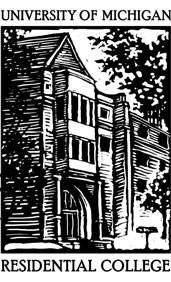As our bus left St. Petersburg for Vytegra, I quickly fell
asleep. Having woken up early that morning, the gray sky and ramshackle
buildings on the outskirts were enough to put me to sleep well before we made
it outside the city limits. We were already in the countryside by the time I
woke up. Glancing down at my watch, I realized that I had not been asleep for
very long—apparently, the transition between urban St. Petersburg and rural
provincial Russia is abrupt and seemingly worlds apart. Soon we stopped by a
rest area for a bite to eat. Inside was a café, which, admittedly, was much
nicer than I expected it to be. (I later found out not only that this rest stop
was new, but that it was the only
such oasis on the entire route from St. Petersburg to Vytegra.) After buying an
apple and some orange juice, I stepped outside. The young lady at the register
was pleasant (it was obvious to me that it was obvious to her that my fellow
travelers and I were foreigners) and I found myself wondering where she was
from, how she ended up working at this roadside rest stop, and what her future
held.
A couple hours later, I found myself wondering the same
thing about our young, fashionable waitresses at a small restaurant just
outside the Alexander Svirsky Monastery. Apart from the monastery and the
handful of dilapidated houses and shops surrounding it, there was nothing—just
birch trees and snow. Where did these waitresses come from, and why were they
still there? How frequently did they encounter outsiders—particularly
Americans? Where did they buy their stylish clothes? How often could they
escape to the European playground that is St. Petersburg? These questions,
which in hindsight seem like demeaning trifles, genuinely crossed my mind. The
isolation of their small community seemed unbearable, and I wondered whether I
would be able to survive in such a place. All roads leading in and out were in
extremely poor condition—it was, quite literally, a challenge just to depart.
 For all the infrastructural shortcomings and intolerable
isolation of the surrounding area, the Alexander Svirsky Monastery was
breathtaking. In the midst of a seemingly hopeless village stood this beautiful
complex of a centuries-old symbol of Russian religion. The white walls of the
monastery appeared to blend seamlessly with the snow on the ground. Whereas the
isolation of the nearby restaurant had given me an impression of misery just
minutes earlier, the isolation of the monastery was beautiful, peaceful, and
entirely fitting. How can the isolation of one place mean two different things?
Here we see another contradiction of the Russian provinces—the simultaneous
beauty and misery inherent in its natural expanses.
For all the infrastructural shortcomings and intolerable
isolation of the surrounding area, the Alexander Svirsky Monastery was
breathtaking. In the midst of a seemingly hopeless village stood this beautiful
complex of a centuries-old symbol of Russian religion. The white walls of the
monastery appeared to blend seamlessly with the snow on the ground. Whereas the
isolation of the nearby restaurant had given me an impression of misery just
minutes earlier, the isolation of the monastery was beautiful, peaceful, and
entirely fitting. How can the isolation of one place mean two different things?
Here we see another contradiction of the Russian provinces—the simultaneous
beauty and misery inherent in its natural expanses.
The story of the monastery itself is fascinating. Having
been converted into a psychiatric hospital during the Soviet era and only
recently restored to serve its original religious purpose, the monastery’s
transformation is symbolic of Russia’s tumultuous history. As was the case for
other religious institutions, the Soviet experience brought with it a top-down
imposition of cultural censorship and submission before the party apparatus:
monks were executed, religious icons were boxed up, and mentally ill patients
soon moved in. It was hard to imagine that this place was once anything but a
fully functioning monastery. As we have learned, religion is a central tenet of
Russian provincial life; the Alexander Svirsky Monastery is exemplary of the
post-Soviet religious revival. But even so, the monastery remains isolated and,
for all its holiness, houses a relatively small number of monks. Like so much
else in the provinces, the monastery is at once a stunning symbol of the
traditional Russian heartland and a reminder of its turbulent past.




No comments:
Post a Comment